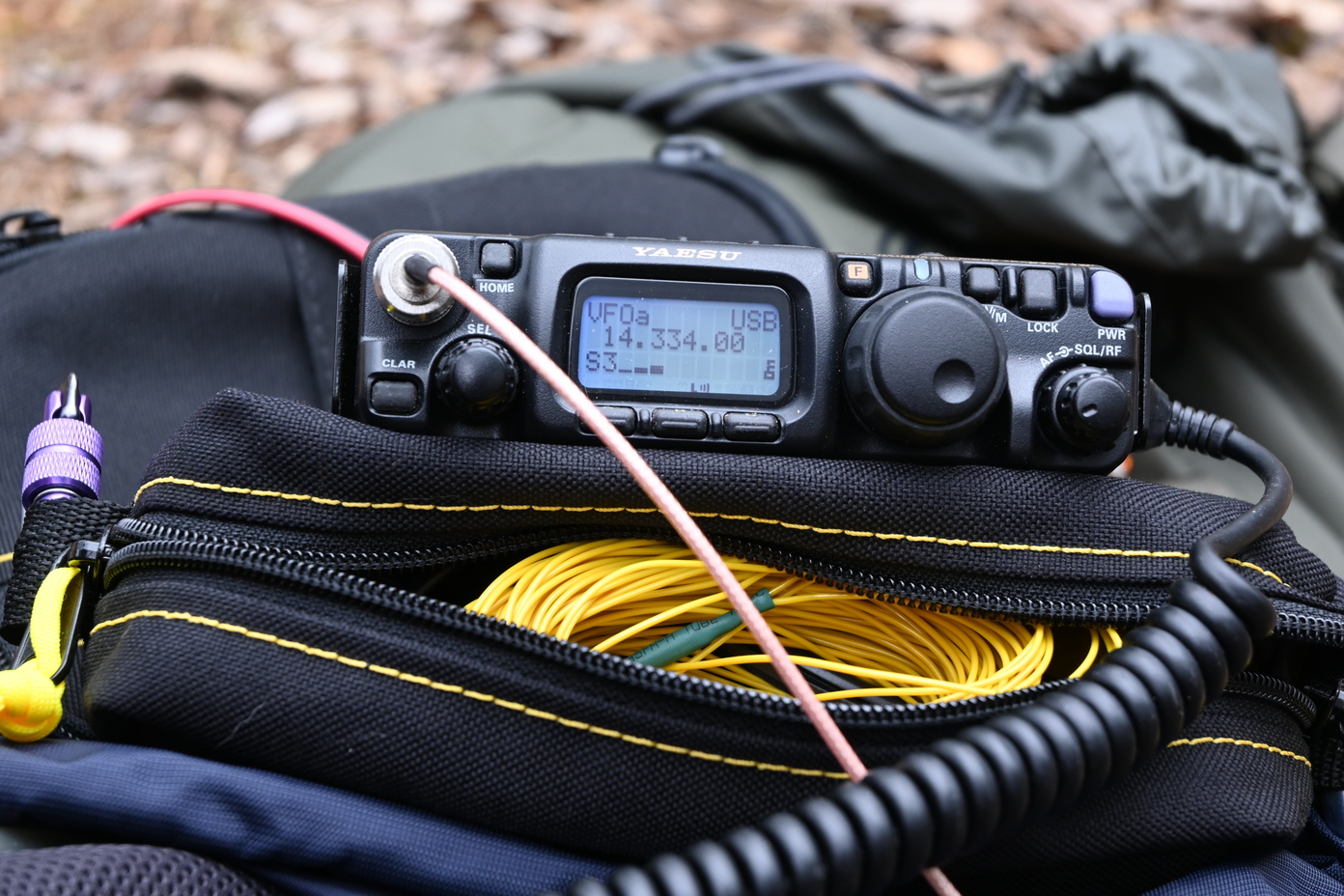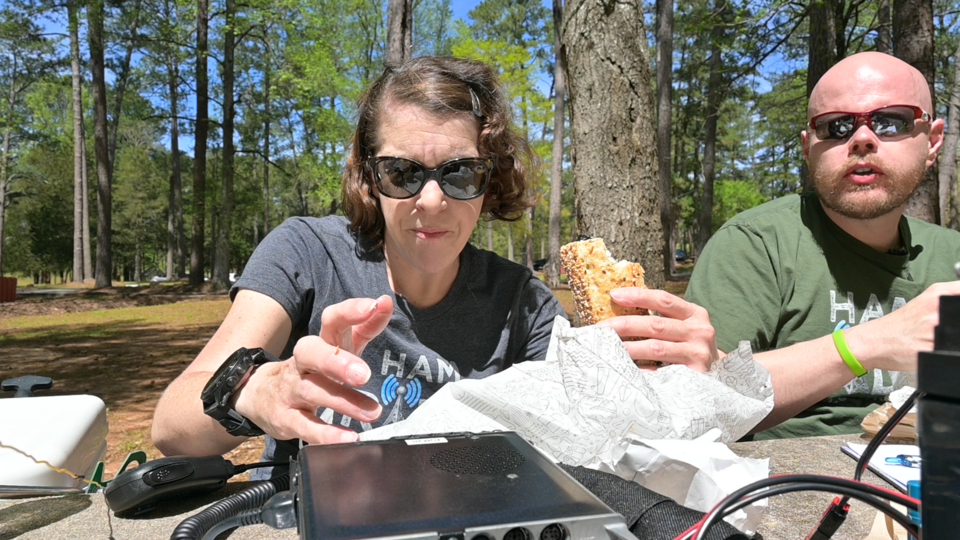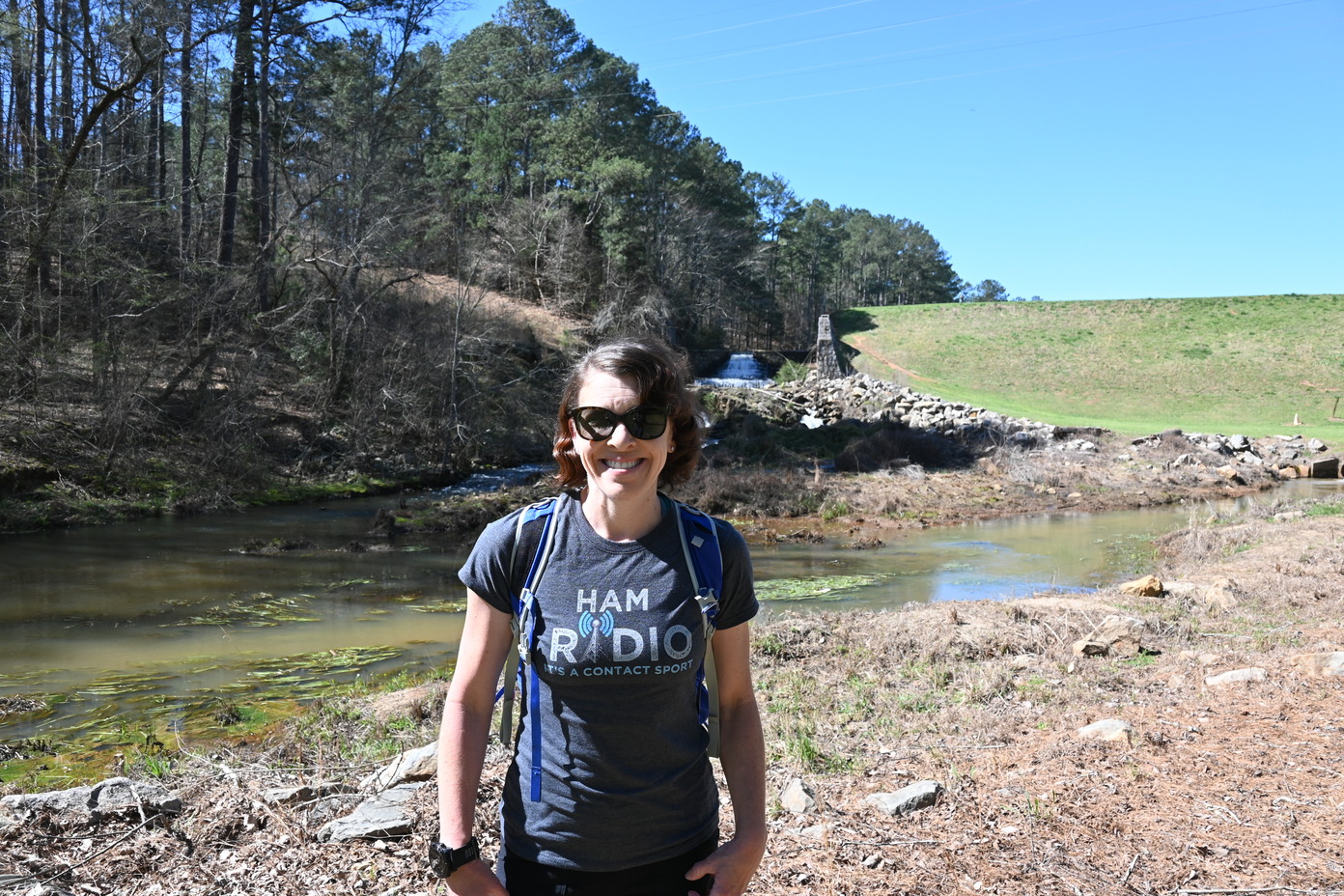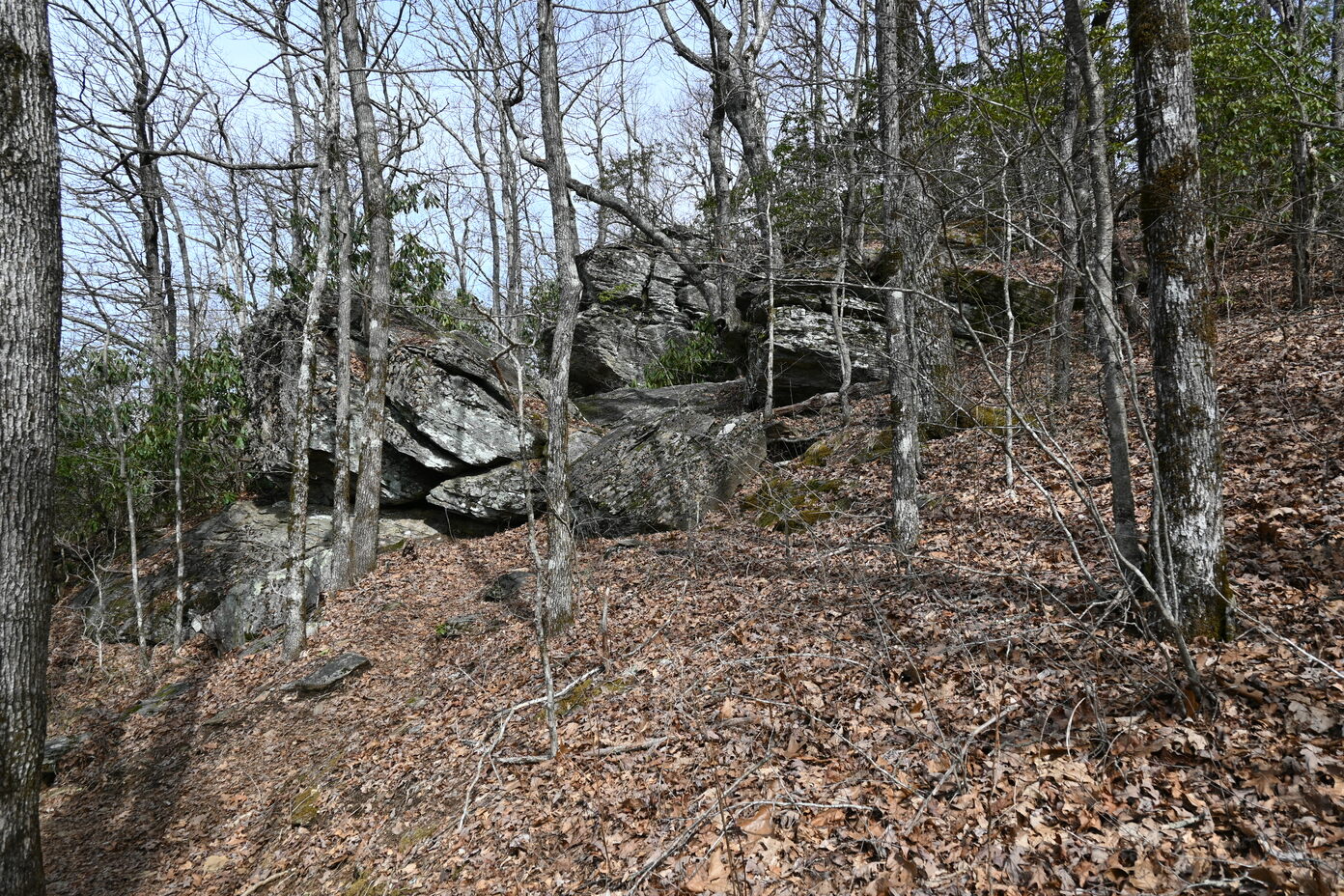Testing my first antenna build on a POTA Activation
This past weekend, I tried my hand at building my first antenna! I decided to build a QRPGuys 40 meter end-fed half wave (EFHW) for our future SOTA and POTA activations. Currently, we have our QRPGuys antenna configured to operate on 20 meters, and since it has performed really well on our recent POTA activations, we wanted to extend it to operate on 40 meters, as 40 meters is a popular band for SOTA.
To build the antenna, in addition to the QRPGuys matching unit, I used lightweight wire from SOTABeams; we built our 20 meter antenna using this wire, and because it is easy to work with and packs up nicely, I decided to use it again to build the 40 meter antenna. For ease of use and hanging, I also wanted to affix a paracord loop to the antenna, so I also needed paracord and heat shrink wrap. Last but not least, I needed wire cutters/strippers!
With my materials in hand, I measured out the length of the wire. Because I am interested in operating the phone portion of the 40 meter band, I wanted my minimum SWR at ~7.200 MHz. This equates to ~41.6 meters; however, because the antenna needs to be a half-wave, I will end up needing ~20.5 meters of wire. Given this measurement and the recommendation on the QRPGuys matching unit, I decided to target ~66 feet of wire. With these numbers in hand, I set out to measure what I thought was 66 feet, but a miscount resulted in ~61 feet of wire instead (note: use a longer tape measure to avoid getting lost counting in multiples). I did the only thing I could do (if I didn’t want to start with a new piece of wire): test what I had!
To make my aforementioned loop, I affixed a piece of paracord to the center of the wire using heat shrink wrap.
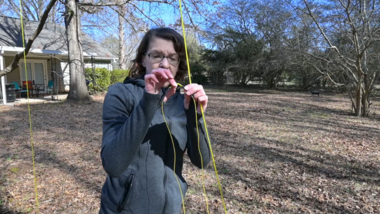
Once the paracord loop was made, I stripped the insulation off of one end of the wire to connect it to the QRPGuys matching unit and made a loop out of the other end for securing the antenna. Next, it was time to deploy the antenna! In the field, Ben (KO4KVH) attaches hi-vis paracord to a Nalgene™ that is ~1/4 full with water and throws the bottle to get the paracord over the highest tree branch possible. The reason for the Nalgene™ is because we always have one handy on a hike, and thus, it is one less heavy item to pack in. Since this was my build, I wanted to be the one to hang the paracord. After a few unsuccessful throws (my softball skills were clearly a little rusty), I was able to get the paracord over a branch high enough to hang the antenna (and I will never laugh at Ben again when he misses the branch…that’s what I’m telling him anyways)!
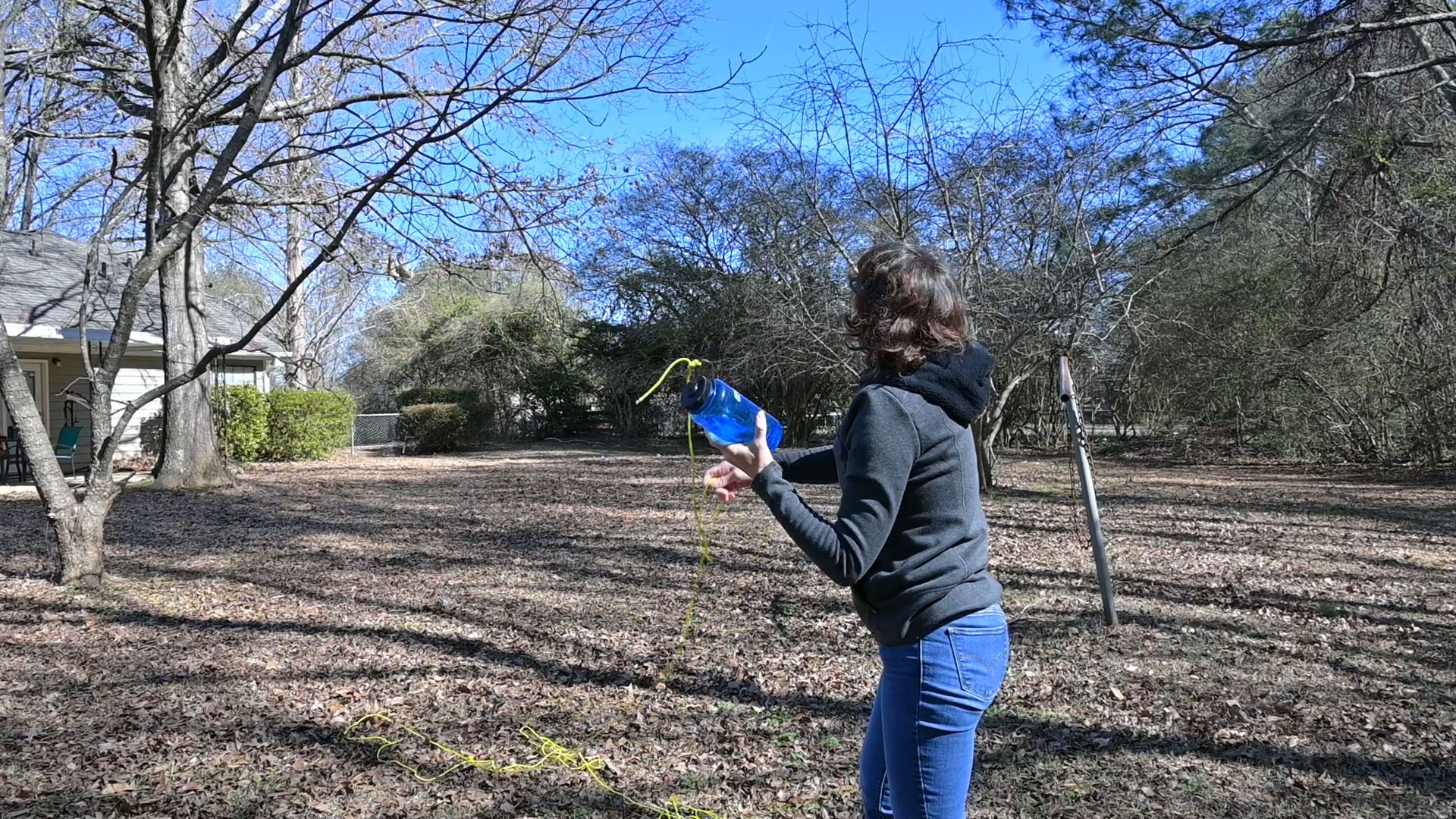
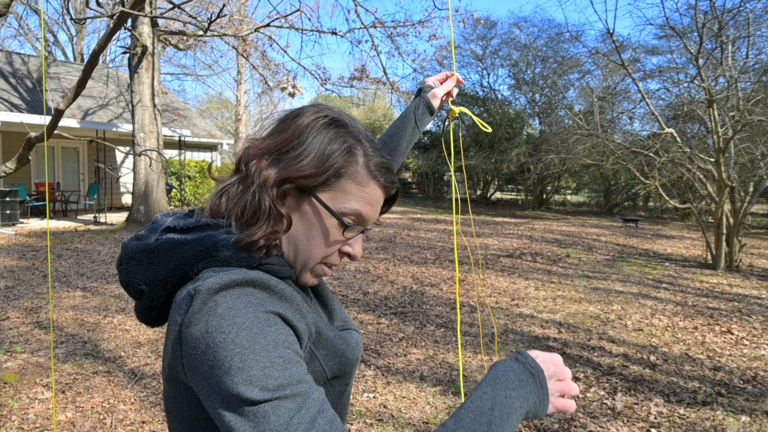
I then connected the antenna to the paracord with my added loop, lifted the antenna as high in the tree as possible, fastened the ‘loop’ end in another tree for a pseudo-inverted ‘L’, and fastened the end of exposed wire to the matching unit.
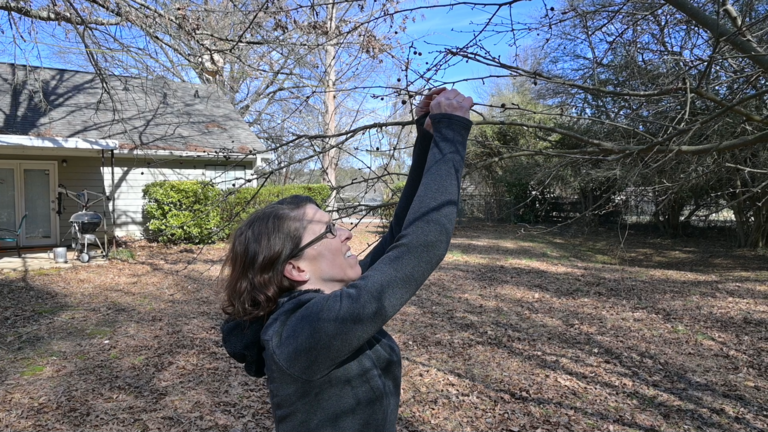
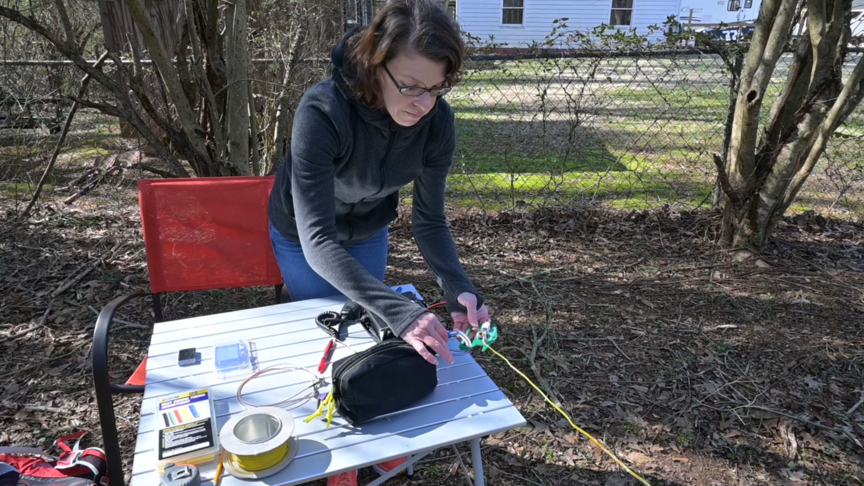
Now that the antenna was set up, the next step was to tune it with a NanoVNA to ensure that it is resonant in the phone portion of the 40 meter band. Because the majority of our activations are made using a Yaesu FT-818 that does not have an internal tuner, and because we do not carry one with us, it is important that we have a resonant antenna. After calibrating the NanoVNA, I hooked the antenna to the NanoVNA for tuning: without having to make any adjustments to the length, the antenna had a SWR of ~1.6 at 7.2 MHz, so I decided to leave well enough alone! Good to know I ended up measuring the correct length of wire after all: beginners luck! To admire my handiwork, I hooked up the antenna to the 818, tested it on 40 meters, and made a QSO as a POTA hunter with an operator near my hometown. We also got on the air with our Elmer, who said we sounded great. That only means one thing: time to take it out into the field!
To give the new antenna a shakedown, we took our radio gear and a few of our new pieces of hiking gear (namely, packs and chairs) out for a POTA activation at the Charlie Elliot Wildlife Center in Mansfield, GA (K-7140). An added bonus of activating Charlie Elliot is that it also counts for POTA activations at Clybel Wildlife Management Area (WMA) (K-7141) and Marben Public Fishing Area (PFA) (K-7467). I do want to note that using the facilities at Charlie Elliot do require a hunting/fishing license or a land use permit, so you want to make sure you have one before you visit: see the Georgia Wildlife website for more information. Charlie Elliot has several hiking trails, among other amenities, and we figured that if we were going to run into any issues, it was best to not have to address them on a mountain summit (and it’s a great excuse to check out new trails)! Our plan was to hike to one of the ponds or near the granite to set up for the activation. After ~1.5 miles into our hike, we reached the granite overlook. Unfortunately, it is a protected area, and we were thus not able to set up there.
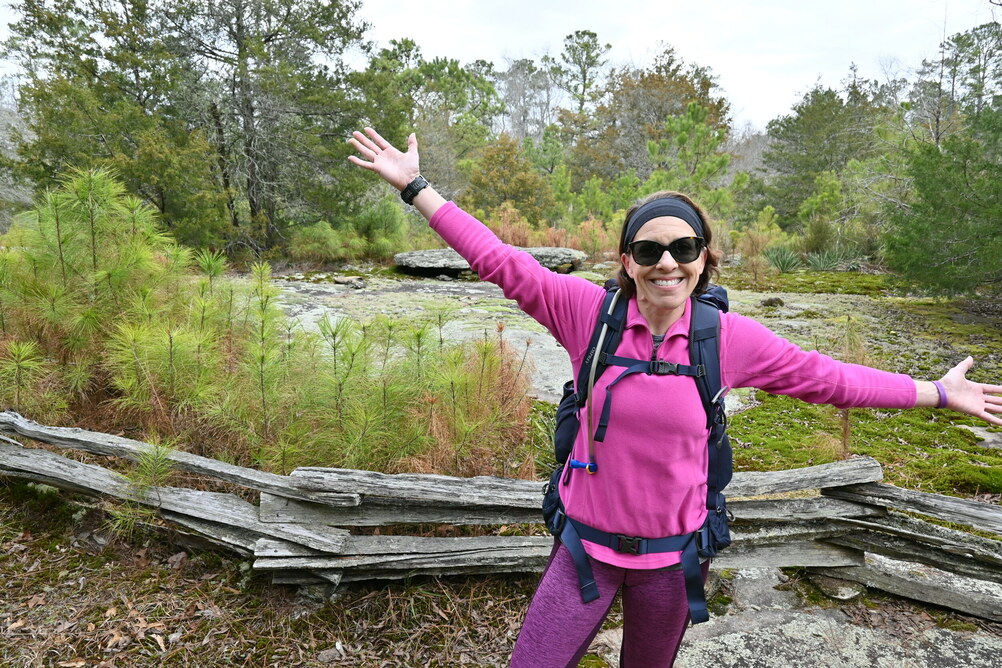
However, we quickly found another clear area just off the trail that gave us plenty of room to set up our equipment without getting in the way of others using the trails or disturbing the area. Anxious to see how the 40 meter antenna would perform, we quickly hung it up, attached it to the 818, and started spinning the dial. The 40 meter antenna appeared to be receiving well; however, after calling CQ a few times with no responses, we decided to swap out the 40 meter for our trusty 20 meter antenna. Once we got up and going on 20 meters, we perused the frequencies to see if we could snag a few Park-to-Park (P2P) contacts. It took about 15 minutes, but we did get two P2P contacts within that time frame. To make our remaining QSOs, we found an open frequency at 14.334 MHz and faced yet another challenge: limited cell reception. Consequently, we were not able to immediately spot ourselves on the POTA app, which meant that Ben and I took turns calling CQ. Finally, we were able to get enough of a wireless signal to put out a spot, and the contacts started coming in!
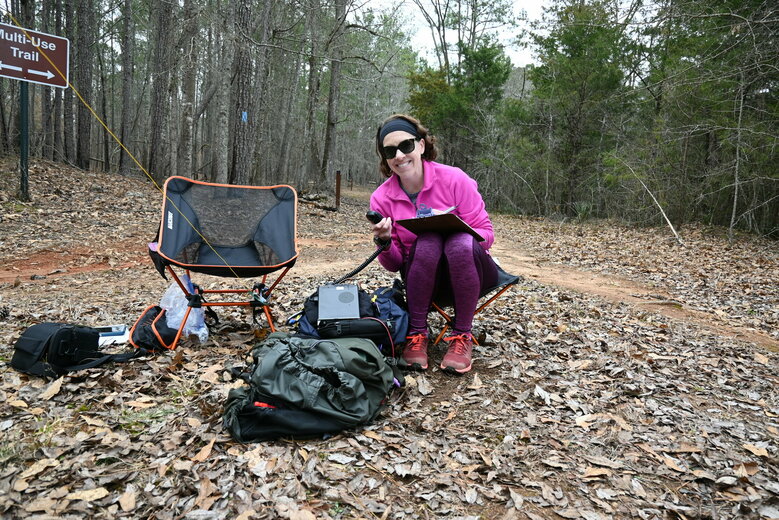
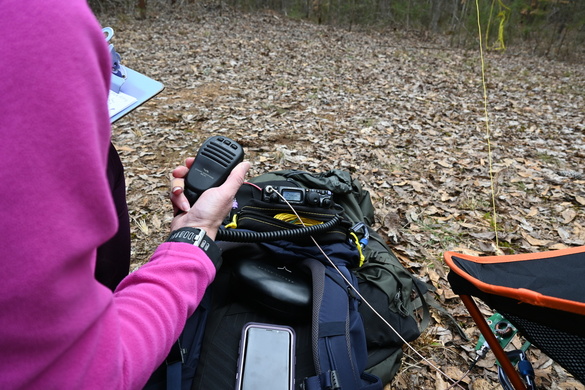
We definitely had to work for this activation, but after about 40 minutes, we made our 10+ contacts. As much as we would’ve loved a few more QSOs, we took into consideration the time needed to hike back to the car and made the decision to pack up our gear and complete our hike. Since the Visitor’s Center was closed on Sunday, I was unable to get my commemorative goodies to celebrate the activation, so I’ll have to make another trip during their opening hours. Overall, we certainly learned a few things on this trip:
- Our camp chairs and my new pack (Osprey Kyte 56) performed really well, as the latter was very comfortable during the duration of the hike.
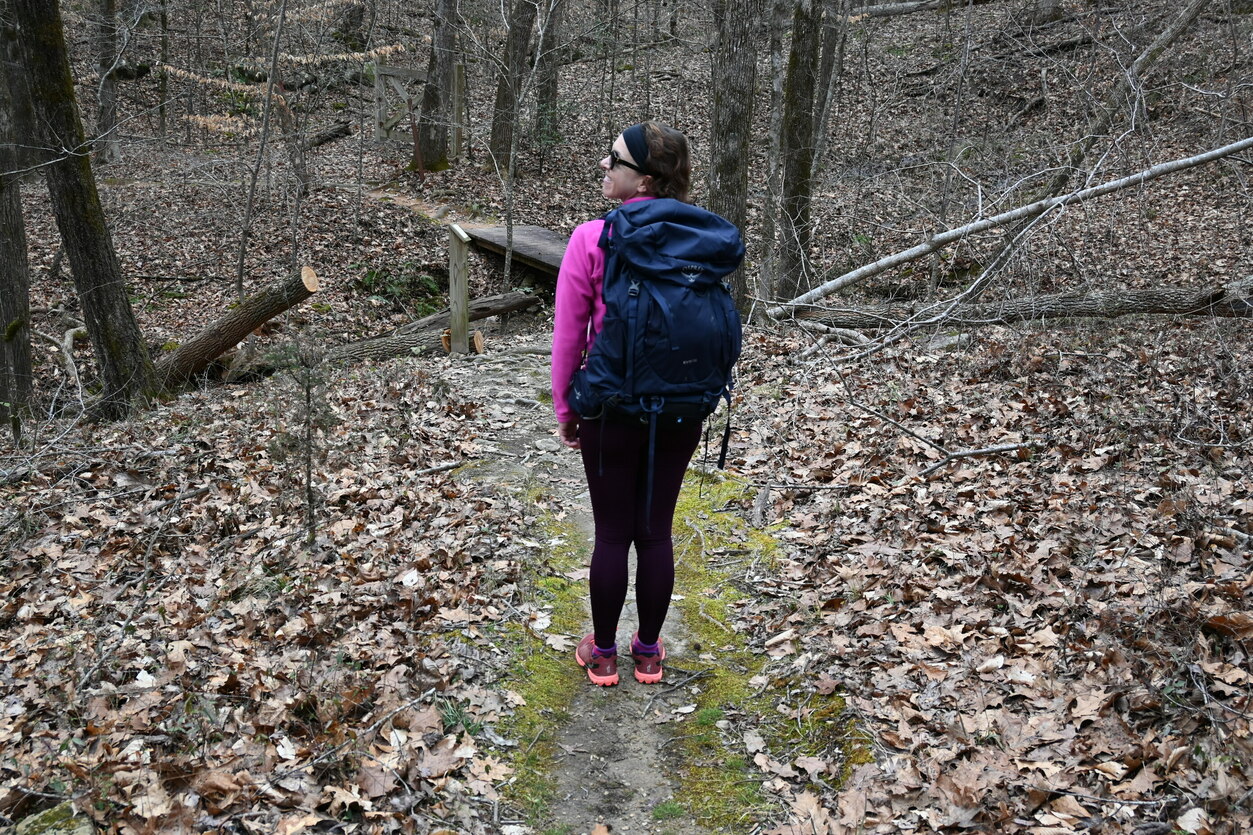
-
Be prepared to call CQ for awhile if you lack a cell signal to place a POTA spot (and are operating QRP).
-
My contacts this weekend earned me both the Platinum Hunter Award (40 unique QSOs as a Hunter) and the Park-to-Park Award (25 P2P QSOs).
-
Finally, we need a more thorough shakedown of the 40 meter antenna. On that note, we look forward to our next activation to put it through the paces!
Until next time,
73,
Rebecca, KO4KVG
